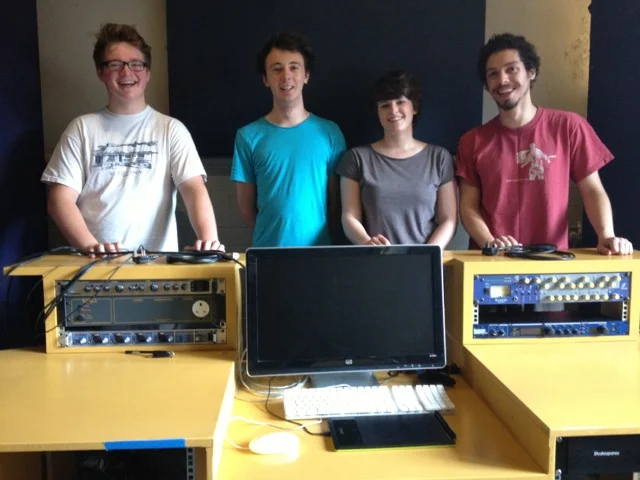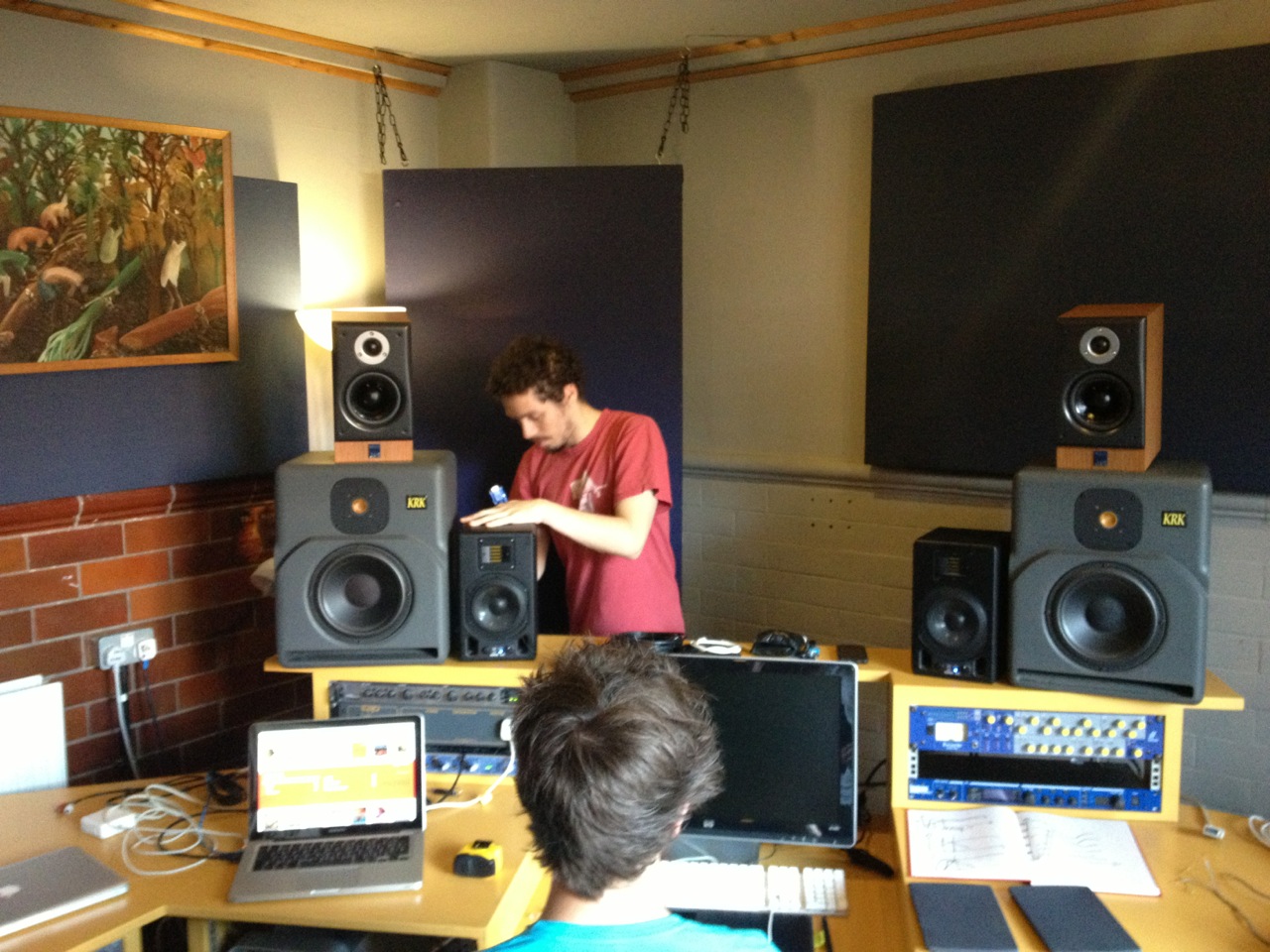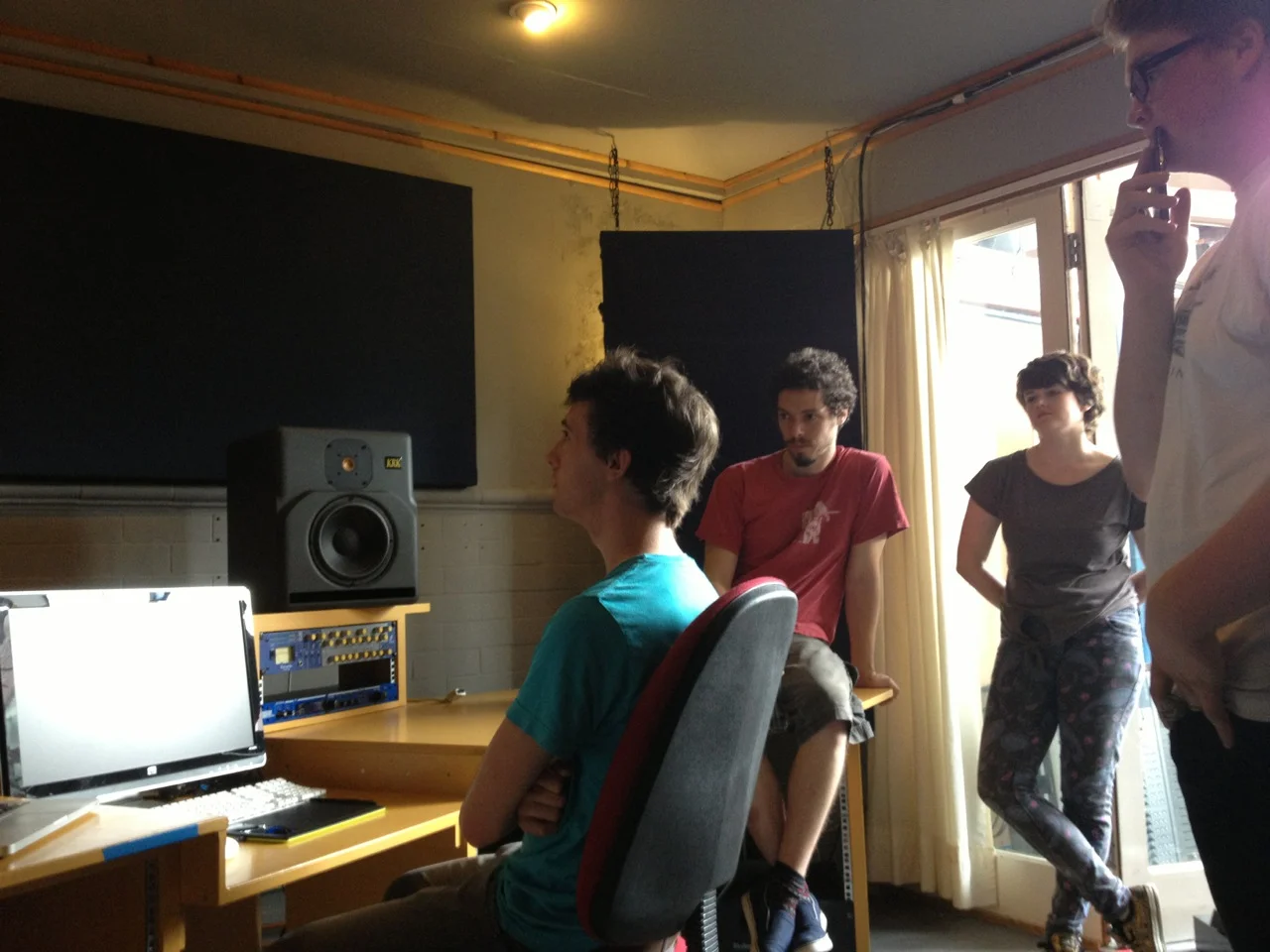Insights: JHM studio rebuild
Insights is the series uncovering the stories behind our composing work.
The John Hardy Music studio has been reconfigured amid recording projects on site and out on location. John writes:
Exactly half way through the massive but thrilling task of creating all the music for the new Welsh drama series Hinterland - Y Gwyll, colleagues at John Hardy Music have been reorganising the studio space where most, but not all, of the work takes place.
Here at Chapter in Cardiff we have a wide range of instruments from acoustic to low-fi to the latest electronic gismos. There is a harmonium, also known as a pump-organ, or pressure organ, to distinguish them from the mouse-proof North American suction organs. There is an old harp, made in 1830. There's an Appalachian dulcimer, a zither, flutes and hand percussion of various kinds, chimes, rain sticks, various unusual drums, a Hammond organ built in 1967 and all sorts of other keyboard instruments, plus the team's own personal instruments - violins, a clarinet, trumpets, harmonica, a cornetto [modelled on the Renaissance precursor to the modern brass cornet], a post horn, a hunting trumpet, and a gemshorn - a kind of flute carved out of the horn of one of the deer family. Recently we hosted a brilliant young double bass player, Aidan Thorne, who made a huge selection of rare and wonderful sounds, as well as more conventional bass music. Recently, a young bass-baritone, Adam Jondelius, came in to record three Schubert songs.
Away from the studio, things have been happening as well. Recently, Tic and Benjie captured some very rich prepared piano, which they played on one of the Steinways at the Royal Welsh College of Music & Drama, then a harp session which included some extremely effective low pedal glide sounds, played by concert harpist Lowri Morgan; they even went to nearby woods to record the scraping and striking of branches and tree trunks, and dry twigs being snapped. All of these sounds have already been processed, edited and named, and have found their way into the somewhat varied and highly bespoke musical soundtrack for the different episodes of Hinterland.
Back in the studio, last week we welcomed recent RWCMD graduate Alex Killpartrick, already something of an expert in acoustics, recording and speaker design. While auditioning various speakers and new positions for monitor placement, to help to guarantee the best and clearest critical listening that is achievable in the space, thanks to Alex, we were very excited to have the opportunity to try a pair of ATC speakers. These excellent British speakers are clear, accurate, unflattering and brutally honest - just what you need when mixing music that has to survive being heard under dialogue and action, and give a feeling of power and emotional connection even on computers and flat screen TVs, not to mention on the most expensive surround systems.
In the course of all this thinking and listening process, the orientation of the control room has shifted round a bit, and much long-buried dust and debris has been hoovered up. That feels good.
Finally, after feeling a bit queazy about it, I was persuaded that letting go of the 32-channel digital mixing desk will create space in the room, improve the sound, and simplify the rig. Leaving the console out of the configuration, for the first time in my working life, feels like a guilty pleasure - a bit risky, but liberating.





